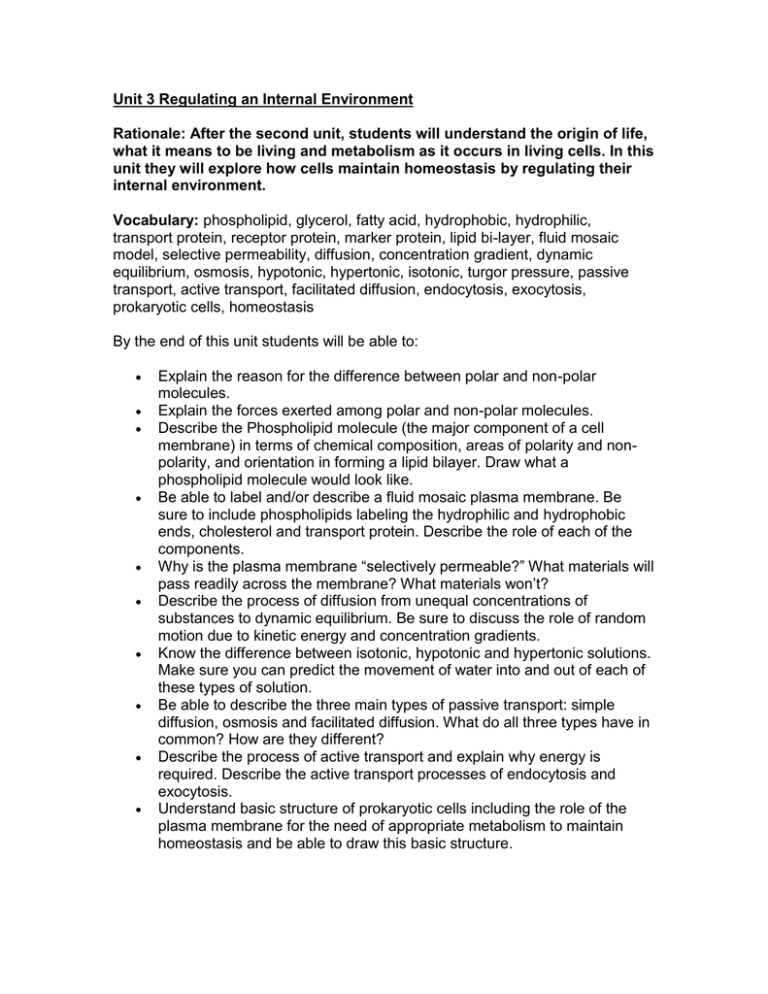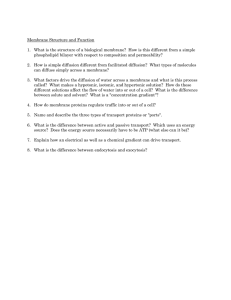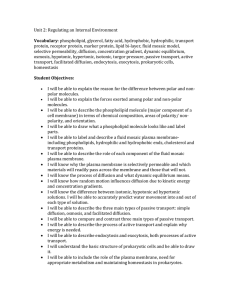Unit 3 Regulating an Internal Environment
advertisement

Unit 3 Regulating an Internal Environment Rationale: After the second unit, students will understand the origin of life, what it means to be living and metabolism as it occurs in living cells. In this unit they will explore how cells maintain homeostasis by regulating their internal environment. Vocabulary: phospholipid, glycerol, fatty acid, hydrophobic, hydrophilic, transport protein, receptor protein, marker protein, lipid bi-layer, fluid mosaic model, selective permeability, diffusion, concentration gradient, dynamic equilibrium, osmosis, hypotonic, hypertonic, isotonic, turgor pressure, passive transport, active transport, facilitated diffusion, endocytosis, exocytosis, prokaryotic cells, homeostasis By the end of this unit students will be able to: Explain the reason for the difference between polar and non-polar molecules. Explain the forces exerted among polar and non-polar molecules. Describe the Phospholipid molecule (the major component of a cell membrane) in terms of chemical composition, areas of polarity and nonpolarity, and orientation in forming a lipid bilayer. Draw what a phospholipid molecule would look like. Be able to label and/or describe a fluid mosaic plasma membrane. Be sure to include phospholipids labeling the hydrophilic and hydrophobic ends, cholesterol and transport protein. Describe the role of each of the components. Why is the plasma membrane “selectively permeable?” What materials will pass readily across the membrane? What materials won’t? Describe the process of diffusion from unequal concentrations of substances to dynamic equilibrium. Be sure to discuss the role of random motion due to kinetic energy and concentration gradients. Know the difference between isotonic, hypotonic and hypertonic solutions. Make sure you can predict the movement of water into and out of each of these types of solution. Be able to describe the three main types of passive transport: simple diffusion, osmosis and facilitated diffusion. What do all three types have in common? How are they different? Describe the process of active transport and explain why energy is required. Describe the active transport processes of endocytosis and exocytosis. Understand basic structure of prokaryotic cells including the role of the plasma membrane for the need of appropriate metabolism to maintain homeostasis and be able to draw this basic structure.




